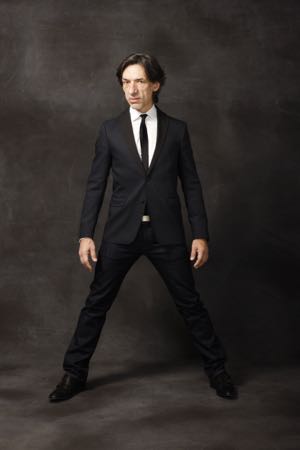
by Matt de la Peña
It’s a ghoulish Halloween morning in Chicago (winds reaching up to 50 mph, hail projected for the afternoon) and Septime Webre is talking America’s “first great ghost story.” The Washington Ballet artistic director, now in his 15th season at the helm of one of the country’s most versatile dance companies, is in the midst of his latest creation, an adaptation of Washington Irving’s spine-tingling classic, The Legend of Sleepy Hollow.
Webre has found a distinctive niche during his tenure at WB, a company he took over from the legendary Mary Day in 1999. His vision of The Nutcracker — set in 1882 Georgetown — has become a must-see event of the season. The Washington City Paper called his adaptation of Lewis Carroll’s Alice’s Adventures in Wonderland “an incredibly creative spectacle, pure and simple.” His adaptations of The Great Gatsby and The Sun Also Rises have proved to be ambitious ventures, offering a brand new vision of two American classics.
Webre and I spoke at length about Sleepy Hollow, his fascination with literature, and his plans for Halloween. Below are excerpts of our interview.
Can you tell me about Sleepy Hollow and how it came to be?
So about five years ago I launched a project called the American Experience. It’s a project to develop full-length ballets using great works of American literature. It seemed to me that our American story has not really been told in the ballet medium. [The Washington Ballet] started by adapting F. Scott Fitzgerald’s The Great Gatsby, then last year I adapted [Ernest] Hemingway’s The Sun Also Rises. Sleepy Hollow is the third installment about America’s first great ghost story.
That’s interesting you say that our American story has not been told; it seems odd that we, as Americans, wouldn’t take more interest in our own stories when it comes to ballet.
American ballet came into its ascendancy under Balanchine and the aesthetic has been abstract — a modernist aesthetic. So much of our stories are still stories written by old dead white guys. They’re so Eurocentric. The [American Experience] project is an effort to develop works in a different direction. It’s been fascinating to build these new ballets from scratch. In the case of the Hemingway and in the Gatsby projects, those works are so rich; it was a process of editing out information. In the case of Sleepy Hollow, it’s a thrilling, twenty-page short story. It’s very concise. The process has been the opposite; it’s been one of exuberance and extrapolation. It struck me early on that the headless horseman is haunting Ichabod Crane but one doesn’t know why. So I’ve developed Ichabod’s back-story. In a moment of anger, Ichabod picks up a sword and decapitates [a British soldier], essentially creating the Headless Horseman. The haunting is a Karmic guilt that Ichabod carries with him through his life. He moves to Sleepy Hollow to escape that torment.
Your fascination with 19th and 20th century literature is well known. You’ve created The Sun Also Rises, The Great Gatsby, and you’re in the midst of tackling Sleepy Hollow. What intrigues you about those particular time periods? [Read more…]




